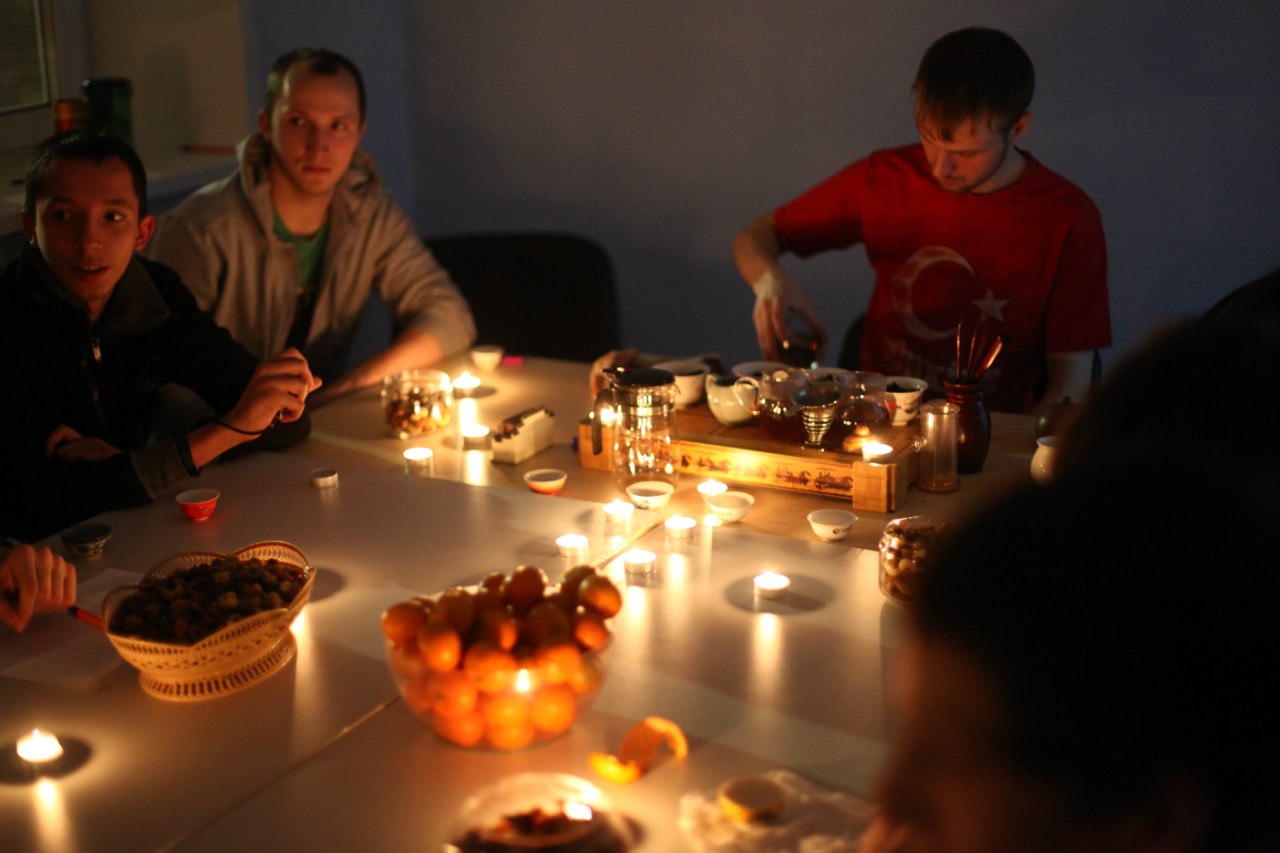Russian tea culture
Every nationality, nation, country is characterized by the presence of a national everyday drink that meets the needs of the population and corresponds to the national culture, traditions and climatic features. For Russia, thanks to the efforts of enthusiasts and Russian merchants, tea became such a drink from the beginning of the 18th century.
Initially, this expensive and exotic product was in demand in narrow aristocratic circles of Russian society and in the gentry environment. Tea drinking was held in the British style (porcelain dishes, cream or milk, usually separately from meals). A merchant tea subculture also developed, the indispensable attributes of which were a samovar, jam, sweets and pastries. Tea drinking, in this case, symbolized the success and wealth of the host (usually a representative of the merchant class). Most likely, the use of lemon, an expensive overseas fruit, when brewing tea is an invention of this subculture. With the opening of the Trans-Siberian Railway and the Suez Canal, the cost of transporting tea decreased, the price of tea dropped, and it became available to wider sections of the Russian population. The bourgeois and proletarian tea subculture was finally formed during this period. Its characteristic feature is the habit of "marrying" tea, i.e. dilute the tea leaves with boiling water to save money. It is also characteristic that tea was a purely urban drink. The tsarist government did not support the development of tea production in Russia, apparently due to the fact that taxes (tea duty) on imported tea constituted a significant part of the treasury's revenue.
As a result, the cultivation of tea plantations became the lot of enthusiasts and philanthropists. The tea issue for the Bolshevik government was a matter of national importance and it is no coincidence that one of its first decrees was the decree on tea. Thanks to the efforts of the Soviet government to develop the tea industry, cultivate tea plantations in Georgia, Azerbaijan, Krasnodar Krai, and promote tea culture, by the end of the 60s and 70s of the 20th century, the USSR entered the ranks of world tea producers, and tea itself became a favorite and everyday drink in all corners of the vast country. It satisfied the tastes of all the peoples inhabiting the USSR with its diversity, and its health and preventive properties were generally recognized. Tea became a kind of national product, an attribute of our culture. With the collapse of the Soviet Union, Russia lost the bulk of its tea plantations, as a result, imports became the main source of tea products.
Tea producers, as well as tea import companies, in order to somehow survive in the wild 90s, began to buy the cheapest raw materials, packaging them under famous brands or creating their own. At the same time, the price of tea and its quality did not always correspond to each other. The quality of tea fell sharply and ceased to satisfy the demands of tea lovers, of which there are many in our country. But a holy place is never empty. Fans of esotericism, "Taoist" practices, Chinese health methods, where good tea is a necessary attribute, just tea lovers, professionals in the field of Chinese culture, as well as trading companies doing business with China, have rediscovered Chinese tea for us. The new is well forgotten old. Unusual variety, a whole bouquet of natural exquisite aromas and tastes delighted the unspoiled Russian tea lovers. The topic turned out to be very interesting for business, and soon wholesale companies began to appear one after another, selling Chinese tea, as well as tea packaged in India and Sri Lanka. They are currently satisfying the demand for premium tea. This is what is currently observed on our tea market, hence the tea boom.
If we discard the esoteric and "Taoist" chaff, may their admirers forgive us, then the bottom line is what is necessary for an admirer of Russian tea culture - fresh tea with pronounced health-improving properties. Is it worth listing the main functions of such tea? This is the prevention of cardiovascular diseases (the scourge of modern society), diseases of the respiratory system, liver and digestive tract, antibacterial, disinfectant, antidote and antitoxic properties. It is a storehouse of vitamins, useful and even vital elements for the body's immune system, etc. Little known is the fact that regular consumption of fresh good tea prevents addiction to smoking and alcohol. Safe for the human body, gently stimulating and relaxing properties of high-quality oolongs are highly valued in China and will be extremely useful for a modern Russian, who is almost constantly in a stressful situation, and for many young people it will provide an alternative to beer, energy drinks that exhaust the nervous system (clearly not useful) and will prevent the path to drugs. In our opinion, the propaganda of tea culture is a powerful lever of influence on mass consciousness and one of the important links in the program of national health improvement. This is a matter of national importance, as we see, not only for the former Soviet, but also for our modern government.
- Комментарии
- Вконтакте






